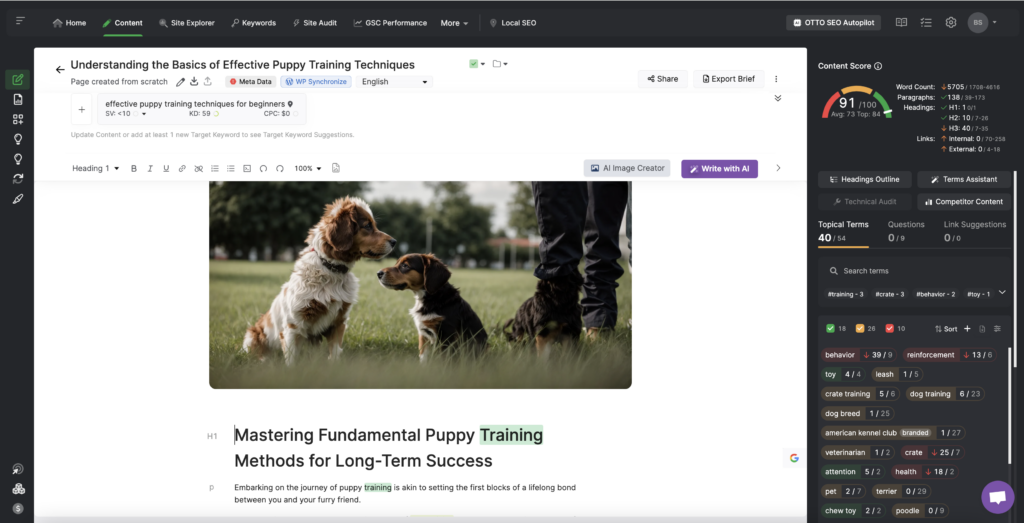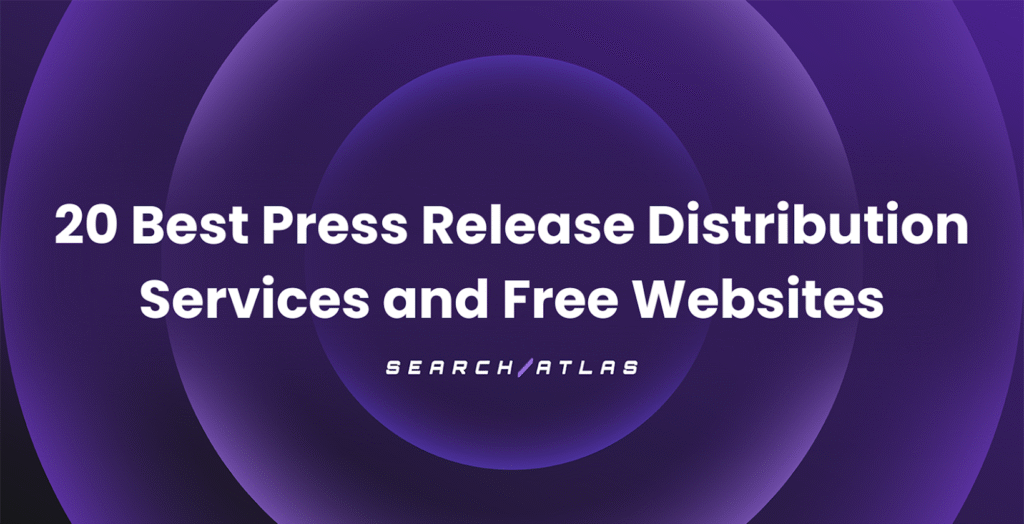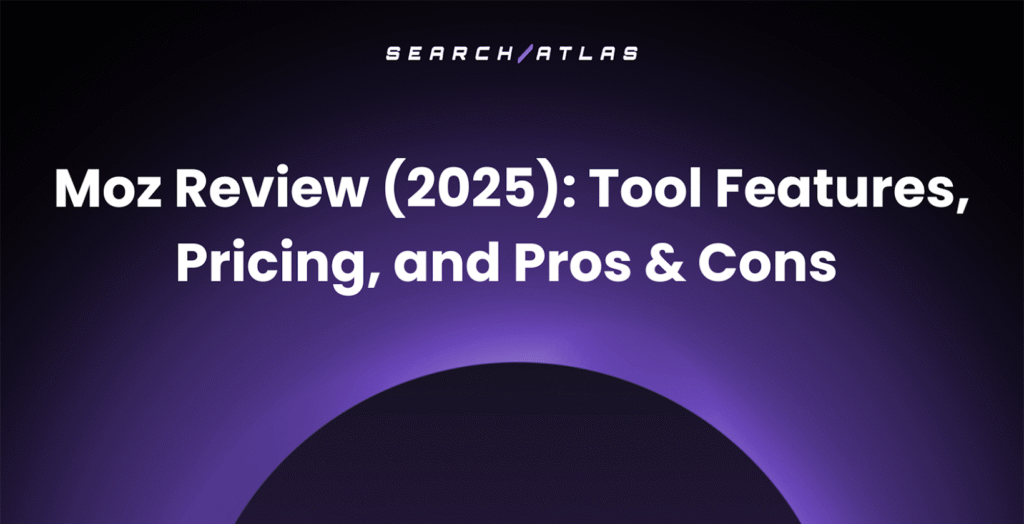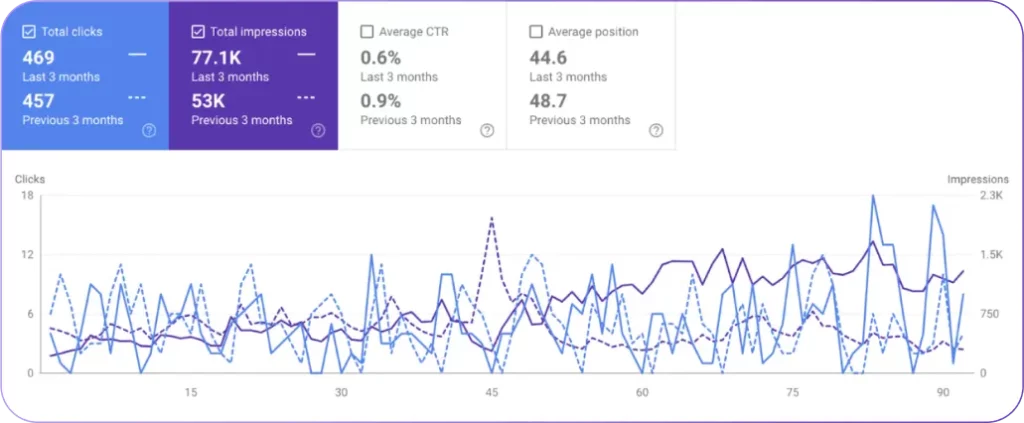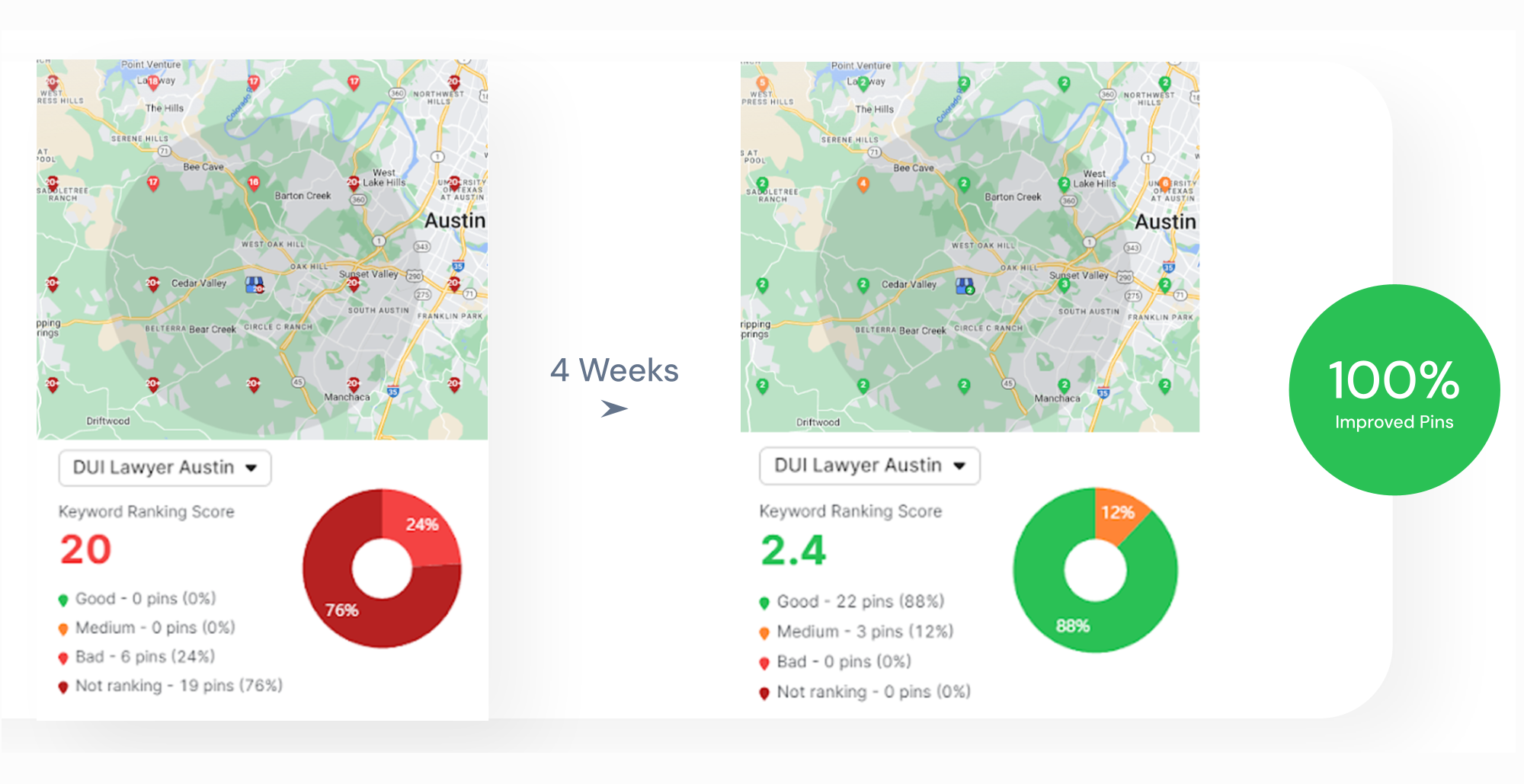You’ve probably heard that “content is king,” but even great content doesn’t stay relevant forever. Over time, articles can become outdated, misaligned with user intent, or lose their SEO value.
That’s why content refresh is necessary: It’s a strategic way to update and optimize existing content rather than starting from scratch. 🔄
By using tools like a content optimizer and content planner, you can streamline the process, ensuring you’re making the most of your content’s potential.
Think of it like remodeling a house instead of building a new one. Small updates like improving readability, adding new insights, or tweaking metadata can make a big difference in how your content performs.
A refresh strategy can drive new traffic, improve rankings, and re-engage your audience. 📈
But what exactly is a content refresh, and how do you do it effectively? We’ll break it down and walk you through the five best steps to refresh your content for maximum impact.

What Is a Content Refresh?
A content refresh means updating and optimizing your existing content to keep it relevant and improve its performance. This can apply to anything from blog posts and landing pages to guides, FAQs, or even long-standing “evergreen” content that still needs occasional updates.
How you refresh your content depends on the piece. It might be as simple as adding images, examples, or actionable steps to make it more engaging.
It could also involve bigger changes like reworking the angle of the article to match current trends, search intent, or include new information. 🔎
Why Content Refreshing Matters
Working Smarter, Not Harder: Instead of creating new content from scratch, refreshing old posts allows you to drive more traffic with what you already have.
There are many reasons to refresh your content. According to a survey of over 200 marketers, the top three benefits include:
- Saving Time and Budget: Refreshing existing content allows you to go to market faster, often within days, compared to the long process of creating new content.
- Addressing Changing Customer Concerns: Your market is always evolving, so keeping your content aligned with current customer needs is crucial.
- Repurposing Content Across Formats: You can reuse content in different formats to engage with different audience segments, turning a popular blog post into an infographic or social media post, for example.
On top of improving content quality, a content refresh directly boosts your SEO by ensuring your pages remain relevant and aligned with current search trends. This goes far beyond the usual benefits, especially if you are using the best SEO content tools:
- Boost Click-Through Rates: Update headlines and descriptions to improve engagement.
- Create Long-Form Content Easily: Combine shorter pieces into comprehensive guides, improving rankings and attracting more backlinks.
- Maintain Website Authority: Keep your backlinks strong by regularly refreshing content.
- Meet Google’s Freshness Factor: Google prefers fresh, authoritative content, giving it a rankings boost.
- Avoid Keyword Cannibalization: Consolidate keyword rankings by updating and refining your older content.
- Improve User Experience: Updated content enhances trust and keeps your audience informed with the latest information.
- Increase SERP Rankings and Traffic: Google favors updated, user-focused content, which helps boost rankings and attract more organic traffic.
- Stay Relevant in Search Results: By regularly auditing and refreshing, you institute relevant content to search intent and keywords over time.
When Should You Refresh Content?
You should refresh your content every 3 months to ensure it stays relevant and up-to-date.
It’s common for content to become outdated or no longer align with current trends and search intent within this timeframe. This often happens when key industry information changes, new trends emerge, or your traffic and keyword rankings drop.
The frequency of refreshes may depend on how quickly your industry evolves. Keep an eye out for outdated facts, significant shifts in your industry, or new keyword opportunities to update your content and keep it performing well.
5 Steps to Effectively Refresh Content to Get Every Ounce of Value
Now that you understand what content refresh is and how it can boost your marketing efforts, let’s dive into the 5 steps to effectively refresh your old content.
1. Gather Your Content Data and Decide What to Update
To kick off your content refresh, start by organizing your existing content and understanding its performance. Gather all your data to identify what’s working, what’s outdated, and what needs a refresh.
Begin by creating an inventory of all relevant content on your site, such as blog posts, landing pages, product descriptions, etc.
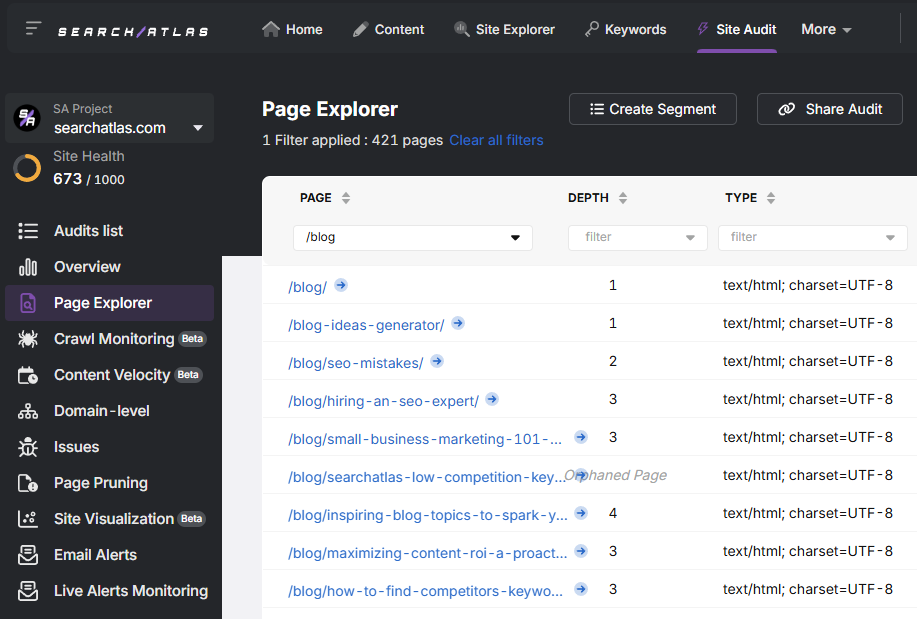
The Site Auditor tool can help you collect data such as URLs, titles, meta descriptions, word count, and last modified dates. This inventory provides a clear picture of your content landscape.
Next, use Google Analytics and Google Search Console to track performance metrics like page views, bounce rate, CTR, and conversion rates. Focus on metrics like impressions and clicks to assess your content’s impact on search results.
Once your data is collected, organize it in a spreadsheet, prioritize which pieces need attention, and analyze performance trends to identify areas for improvement. Look for pages with declining traffic, high impressions but low CTR, or content that ranks just off the first page.
Finally, categorize your content into four groups:
- Keep: High-performing content that’s still relevant.
- Update: Outdated content needing minor tweaks.
- Overhaul: Underperforming content needing major revisions.
- Remove: Irrelevant or outdated content that no longer adds value.
This helps you focus on what needs to be refreshed and where to put your efforts for the best return on investment.
2. Assess Your Current Target Keywords and Market
When reviewing outdated content, you may find that certain market personas need an update in terminology or factors that were missing in the original profile.
Additionally, older content may not have been optimized for the right keywords. If you’ve adjusted your target keywords or audience, it’s important to update your content accordingly.
Pay attention to outdated advice and revise it to reflect current best practices.
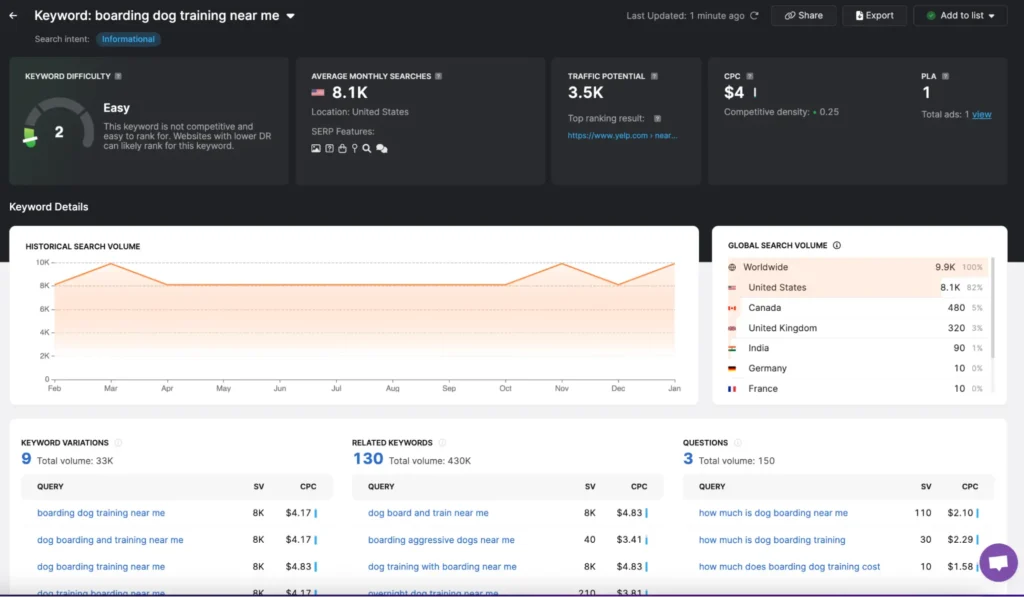
3. Actually Update Your Content
Outdated content can be spotted by issues like typos, broken links, or old statistics. Always replace outdated data with the most current available, and update broken or outdated links with more relevant ones to avoid costly SEO mistakes.
Start by fixing any outdated information, like statistics or broken links, and refresh examples or case studies to reflect current trends.
Next, improve your content by adding more depth, including new sections, and updating keywords naturally. There are many AI content creation tools that can help you with that. Also, ensure grammar and spelling are checked to maintain readability.
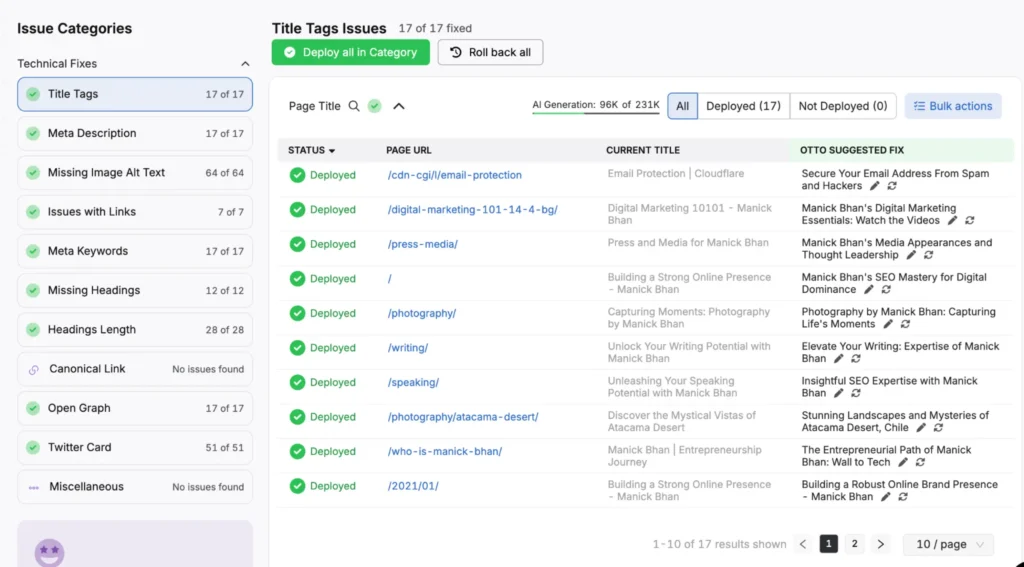
For SEO, optimize meta tags, descriptions, headers, and internal and external links to boost visibility and user engagement.
Updating your content increases its chances of appearing current and relevant, leading to better click-through rates.
Ensure your content follows Google’s E-E-A-T (Experience, Expertise, Authoritativeness, Trustworthiness) by adding author bios, case studies, testimonials, and expert quotes, and using structured data for search engines.

Use Scholar to measure different metrics on your content. Scholar is an advanced content optimization tool designed to boost SEO by aligning content with Google’s ranking criteria.
It assigns a score from 0 to 100 to pinpoint the strengths and weaknesses of your content, guiding precise improvements.
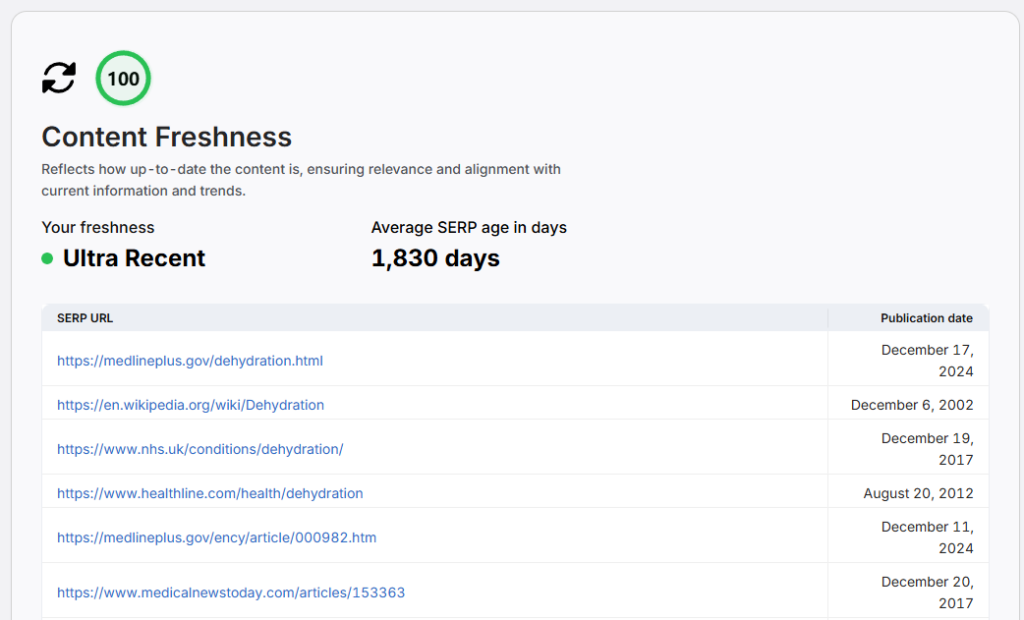
The content freshness metric tracks content updates, including timestamps, to signal recency to search engines.
4. Refresh the Design and Structure
Web design today is all about simplicity and visual appeal. If your site feels outdated with clunky fonts, slow loading times, or a messy layout, visitors may bounce before reading a word. Keep things clean and easy to navigate, and use plenty of white space to make the content stand out.
But don’t forget to keep it dynamic! Add engaging elements like images, videos, and infographics to make your content pop.
Use Scholar to analyze the human effort involved in your content. This metric goes beyond human writing and analyzes elements such as lists, tables, images, videos, and unique schemas.
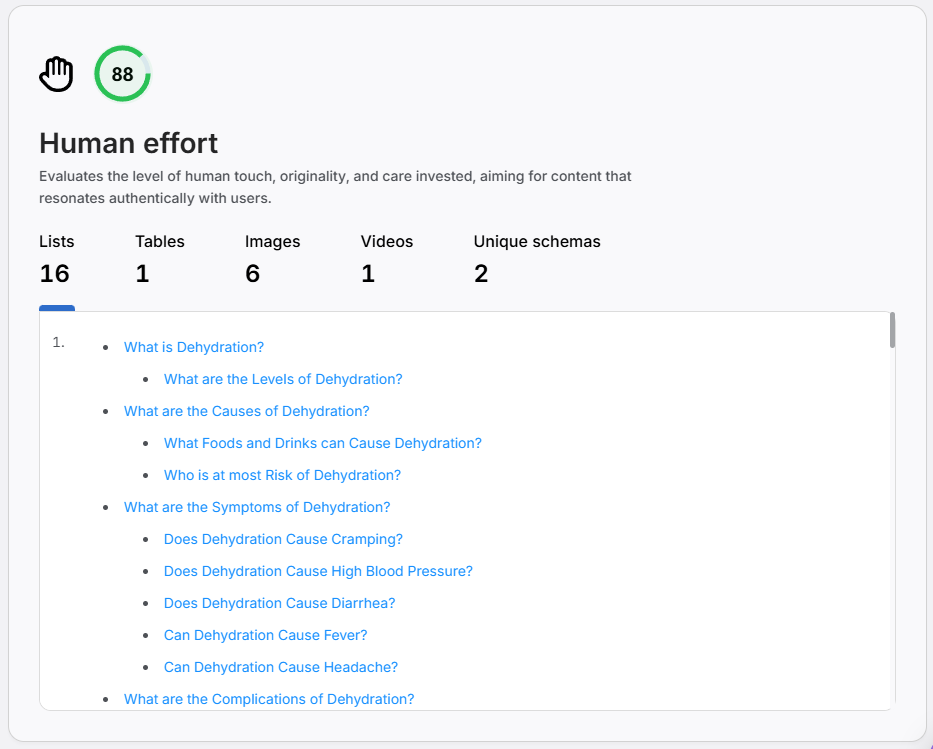
All of these elements refresh the overall design and contribute to the content’s quality and engagement.
Interactive features, like social media share buttons or comment sections, also keep users engaged and encourage them to spend more time on your site. Regular updates to design and functionality will help you stay fresh and relevant.
Use OTTO to automatically identify and fix any problems your website might have with Twitter Cards.
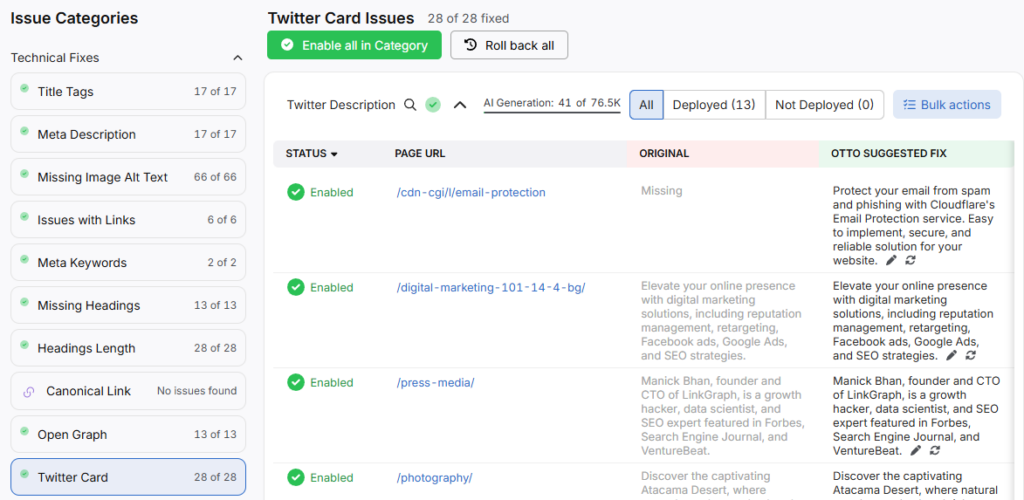
5. Monitor the Performance of the Current Content
Once you’ve refreshed your content, don’t just set it and forget it, track how it performs to see what’s working and where you can improve.
Use Google Analytics 4 (GA4) and Google Search Console (GSC) to track key metrics, such as:
- Organic traffic: Measures how many people find your page through search.
- Search rankings: Shows whether your content is climbing for target keywords.
- Engagement: Reflects visitor behavior, like time on page and conversions.
- Click-through Rate (CTR): Indicates how often people click on your content in search results.
You don’t need to check manually GA4 and GSC, it’s possible to integrate them in automated and customizable reporting tools.
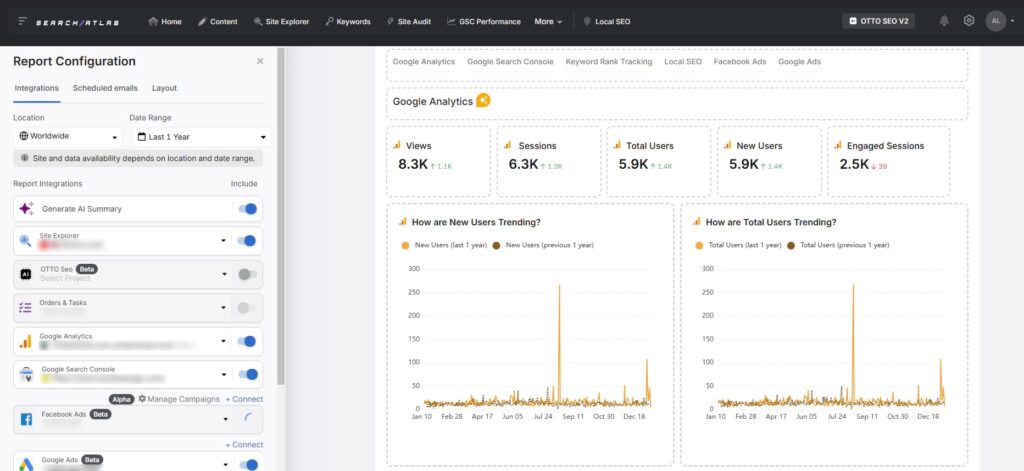
Your competition isn’t standing still, keep tabs on their content strategy using competitor research tools. Here’s what you need to monitor:
- Rankings: Reveals shifts in competitor positions over time.
- Updates: Tracks when competitors refresh content or add new insights.
- Strategy tweaks: Helps identify opportunities to refine your own content.
How Search Atlas Automates Your Content Refresh Process
Content refresh is one of the easiest ways to boost traffic without starting from scratch. But if you’ve tried it before and didn’t see results, the problem might not be the content itself—it could be poor UX, a weak search intent match, or technical SEO issues holding you back.
Search Atlas has earned prestigious recognition from Gartner for its cutting-edge SEO automation.

Instead of spending hours fixing these manually, let Search Atlas do the heavy lifting. Our AI SEO agent, OTTO, automatically optimizes your content, finds the right keywords, and fine-tunes your technical SEO—saving you time and effort.
Automate your content refresh and entire SEO strategy with Search Atlas and OTTO, the AI SEO agent. Try our free trial now, cancel anytime!


